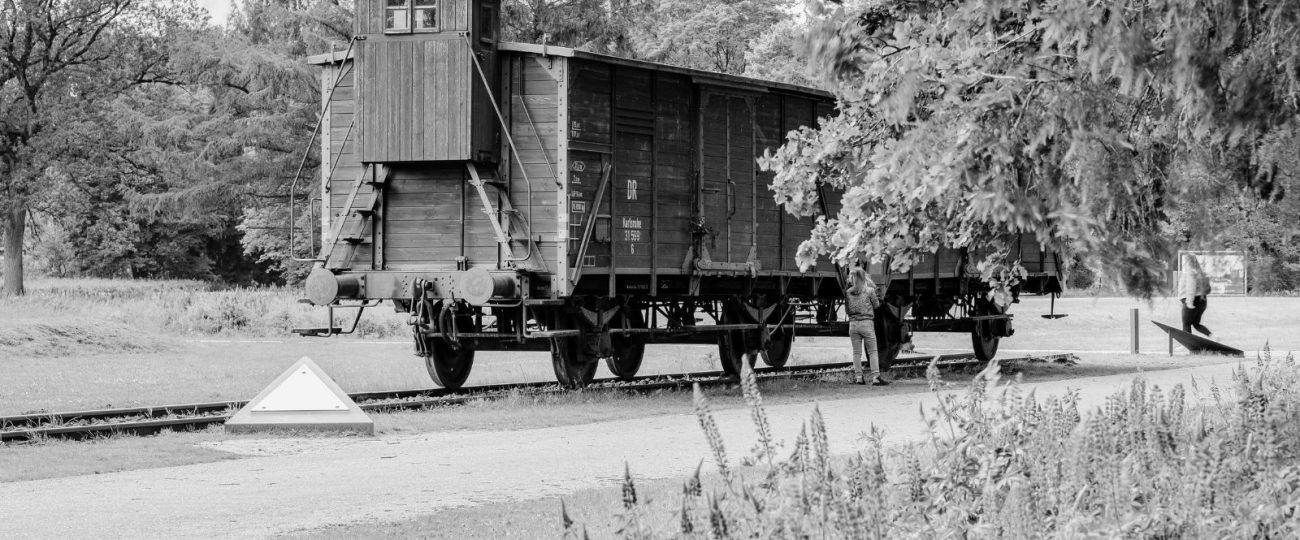What Happened On July 22nd?
On July 22, 1942, the Warsaw Ghetto faced an ominous day. SS and police units, led by SS-Sturmbannführer Hermann Höfle, surrounded the ghetto, ready to deport and exterminate approximately 300,000 Jews. This operation began the Grossaktion Warsaw, a systematic effort to annihilate the Jewish population.
At dawn, the Jewish Council (Judenrat) met with the SS and learned about the impending deportations. Adam Czerniaków, the head of the Judenrat, received orders to provide a daily quota of Jews. Unable to condemn his people, Czerniaków committed suicide the next day. His note read, “They are demanding me to kill the children of my people with my own hands. I have nothing to do but die.”
The SS and Jewish police, or Ordnungsdienst, rounded up Jews from their homes and workplaces. They herded them to the Umschlagplatz, the central deportation square, where they awaited transport in overcrowded cattle cars bound for Treblinka. Families were torn apart, and possessions were abandoned in the chaotic scene.
Prelude to Catastrophe
The Warsaw Ghetto, established in October 1940, confined over 400,000 Jews in 1.3 square miles. Conditions were dire, with rampant disease, starvation, and severe overcrowding. Despite these hardships, the community maintained clandestine schools and cultural activities, showing an unreal amount of resilience.
However, the Nazi regime aimed for the complete extermination of European Jewry. The Grossaktion Warsaw was a crucial step in this “Final Solution,” designed to liquidate the Warsaw Ghetto and transport its inhabitants to Treblinka extermination camp.
The Nazis meticulously planned the Grossaktion to exploit the element of surprise and prevent resistance. The Jewish police, placed in a moral dilemma, faced coercion to participate in the round-ups. Some hoped to save their own families or reduce the violence, while others secretly warned friends or helped them escape.
The Machinery of Death
The deportees’ destination was Treblinka, a death camp engineered for mass murder. Located 50 miles northeast of Warsaw, Treblinka had sections for reception and extermination. Upon arrival, Jews were told they were being resettled and needed to shower. Once inside the gas chambers, victims were asphyxiated using carbon monoxide. The process, from arrival to death, often took hours.

Treblinka’s brutal efficiency was simply horrifying. It processed up to 15,000 people per day, demonstrating the Nazis’ industrial approach to genocide. They disposed of bodies in mass graves and confiscated all personal belongings
Inhumane Conditions and Brutality
The conditions during the deportations were horrendous. Jews were packed into cattle cars, often over 100 people per car, without food, water, or sanitation. Many died during the journey from suffocation, dehydration, or terror. Those who survived faced immediate execution upon arrival at Treblinka.
Janusz Korczak, a pediatrician and orphanage director in the Warsaw Ghetto, chose to stay with his orphans and accompany them to Treblinka. His unwavering commitment to the children highlighted the humanity that persisted even in the bleakest moments.
Resistance & Heroism
Amidst the terror, acts of resistance and heroism emerged. Underground organizations like the Jewish Combat Organization (ŻOB) and the Jewish Military Union (ŻZW) planned uprisings and smuggling operations. They gathered intelligence, secured weapons, and formulated strategies to resist the Nazis.
The Warsaw Ghetto Uprising in April 1943 directly responded to the continued deportations and mass killings. Jewish fighters, vastly outnumbered and outgunned, fought with homemade weapons and smuggled arms. Their resistance, though ultimately crushed, remained to be a powerful symbol of defiance.
Aftermath and Memory
The Grossaktion Warsaw and the broader Holocaust left an indelible scar on humanity. The systematic extermination of Jews in the Warsaw Ghetto was the peak of human cruelty. It is essential to remember the names, faces, and stories of those who perished and those who resisted, ensuring such atrocities are never repeated.
Survivors and historians documented the events of the Grossaktion. Memorials, museums, and educational programs keep the victims’ memory alive. The Warsaw Ghetto Memorial stands as a tribute to those who suffered and died, reminding future generations of genocide’s horrors and the human spirit’s resilience.
Lesser-Known Details
The Jewish police, or Ordnungsdienst, was forced to assist in the round-ups. These individuals faced an impossible moral dilemma: comply to save their lives or resist and face immediate execution. Many tried to mitigate harm by warning others or secretly helping people escape, but their involvement remains a painful aspect of Holocaust history.
Another poignant aspect was the “Ringelblum Archive,” created by Oneg Shabbat led by historian Emanuel Ringelblum. They documented daily life in the ghetto, the horrors of the deportations, and personal testimonies. These buried archives, discovered after the war, provided invaluable insights into the Jewish community’s experiences and resistance during this period.
The Grossaktion Warsaw illustrated the depths of human depravity and the resilience, courage, and spirit of those who suffered and fought back. This chapter of history demands remembrance and reflection, ensuring that the lessons of the past guide our actions in the present and future.





